Estimation of the Effect of Single Source of RF Interference on an Airborne Global Navigation Satellite System Receiver: A Theoretical Study and Parametric Simulation †
Abstract
1. Introduction
2. Previous Works and Methods
3. Justification of Assumptions
Radiation Pattern of the Airborne GNSS Receiver’s Antenna
4. Mathematical Modeling
4.1. The 3-Dimensional Flight Profile
4.2. Radiation Patterns of a GNSS Receiver’s Antenna
4.3. Modeling the Angle of Arrival (AoA) and the Total Antenna Gain as a Function of the AoA
4.4. Modeling the Path Gain Factor and the Link Budget
5. Basic Results
Angular Analysis and Optimized Flight Profile
6. Discussion
6.1. Multipath Fading Effect
6.2. Effect of Distance Between Source and Landing Site
6.3. OEP vs. Source Location
6.4. GNSS Receiver’s Chance of Success
6.5. Path Loss and Operational Considerations
7. Conclusions
Author Contributions
Funding
Institutional Review Board Statement
Informed Consent Statement
Data Availability Statement
Conflicts of Interest
References
- Dachev, Y.; Panov, A. 21st Century Celestial Navigation Systems. In Proceedings of the 18th Annual General Assembly AGA, IAMU, Varna, Bulgaria, 11–14 October 2017. [Google Scholar]
- SR-71, An Online Aircraft Museum, The Blackbird Archive an In-depth Look at the A-12, YF-12, and SR-71, SR-71 Flight Manual, Section IV: Navigation and Sensor Equipment, Astro-inertial Navigation System—Tape 12. Available online: https://www.sr-71.org/blackbird/manual/4/ (accessed on 24 January 2025).
- Tsai, K.-C.; Tseng, W.-K.; Chen, C.-L.; Sun, Y.-J. Analytical Solution Method for Celestial Positioning. J. Mar. Sci. Eng. 2022, 10, 771. [Google Scholar] [CrossRef]
- Kapotis, E.; Symeonides, C. Learning from a Museum Exhibit: The Case of the 19th-Century Compensation “Gridiron” Pendulum. Phys. Teach. 2019, 57, 222. [Google Scholar] [CrossRef]
- Popkonstantinovic, B.; Miladinovic, L.; Stoimenov, M.; Petrovic, D.; Petrovic, N.; Ostojic, G.; Stankovski, S. Practical method for thermal compensation of long-period compound pendulum. Indian J. Pure Appl. Phys. 2011, 49, 10. [Google Scholar]
- Asche, G.P. The Omega System Of Global Navigation. In Proceedings of the 10th International Hydrographic Conference, Monaco, 10–22 April 1972. [Google Scholar]
- Pace, S.; Frost, G.; Lachow, I.; Frelinger, D.; Fossum, D.; Wassem, D.K.; Pinto, M. The Global Positioning System Assessing National Policies; Critical Technologies Institute, RAND: Santa Monica, CA, USA, 1995; ISBN 0-8330-2349-7. [Google Scholar]
- Dale, A.; Daly, P. The Soviet Union’s GLONASS Navigation Satellites. IEEE Aerosp. Electron. Syst. Mag. 1987, 2, 13–17. [Google Scholar] [CrossRef]
- Lu, J.; Guo, X.; Su, C. Global Capabilities of BeiDou Navigation Satellite System. Satell. Navig. 2020, 1, 27. [Google Scholar] [CrossRef]
- Hecker, P.; Bestmann, U.; Schwithal, A.; Stanisak, M. Galileo Satellite Navigation System: Space Applications on Earth; European Parliamentary Research Service, Scientific Foresight Unit: Brussels, Belgium, 2008; ISBN 978-92-846-3340-1.
- Schmidt, G.T. INS/GPS Technology Trends; NATO Documents, RTO-EN-SET-116; Massachusetts Institute of Technology: Cambridge, MA, USA, 2011. [Google Scholar]
- Azouz, A. GPS\INS Integration for Land Vehicle Navigation Application. In Proceedings of the Al-Azhar Engineering 10th International Conference, Cairo, Egypt, 24–26 December 2008. [Google Scholar]
- Esmaeilkhah, A.; Lavasani, N. Jamming Efficacy of Variable Altitude GPS Jammer Against Airborne GPS Receiver, Theoretical Study and Parametric Simulation. Adv. Electromagn. 2018, 7, 57–64. [Google Scholar] [CrossRef]
- Lavasani, N.; Esmaeilkhah, A. Mathematical Modeling of Efficacy of Ground-based Jamming Operation against Airborne GPS Receiver. In Proceedings of the 1st Conference on Modeling Mathematics & Statistics in Applied Studies, Chalus, Iran, 16 February 2017. [Google Scholar]
- Rüeger, J.M. Refractive Index Formulae for Radio Wave. In Proceedings of the FIG XXII International Congress, Washington, DC, USA, 22 April 2002. [Google Scholar]
- Stephens, G.; Gristey, J.J.; Schmidt, S. The Spectral Nature of Earth’s Reflected Radiation: Measurement and Science Applications. Front. Remote Sens. 2021, 2, 664291. [Google Scholar] [CrossRef]
- Mella, K. Theory, Simulation and Measurement of Wireless Multipath Fading Channels. Master’s Thesis, Norwegian University of Science and Technology, Trondheim, Norway, May 2007. [Google Scholar]
- Collin, R.E. Antennas and Radiowave Propagation; McGraw-Hill: New York, NY, USA, 1985. [Google Scholar]
- Hum, S.V. Radio and Microwave Wireless Systems, Atmospheric Effects; Wiley and Sons: Hoboken, NJ, USA, 2010. [Google Scholar]
- Dolukhanov, M. Propagation of Radio Waves; Editorial URSS: Moscow, Russia, 1995; ISBN 5884170823/9785884170827. [Google Scholar]
- Alsamhi, S.H.; Almalki, F.; Ma, O.; Angelides, M.C. Performance optimization of tethered balloon technology for public safety and emergency communications. Telecommun. Syst. 2022, 75, 235–244. [Google Scholar] [CrossRef]
- Vishal, M.; Taploo, A.; Thote, S.P. Airborne Internet Providing Tethered Balloon System, December. Int. J. Eng. Res. 2015, 4, 680–684. [Google Scholar] [CrossRef]
- Balanis, C.A. Antenna Theory: Analysis and Design, 4th ed.; John Wiley & Sons: Hoboken, NJ, USA, 2016; ISBN 978-1-118-64206-1. [Google Scholar]

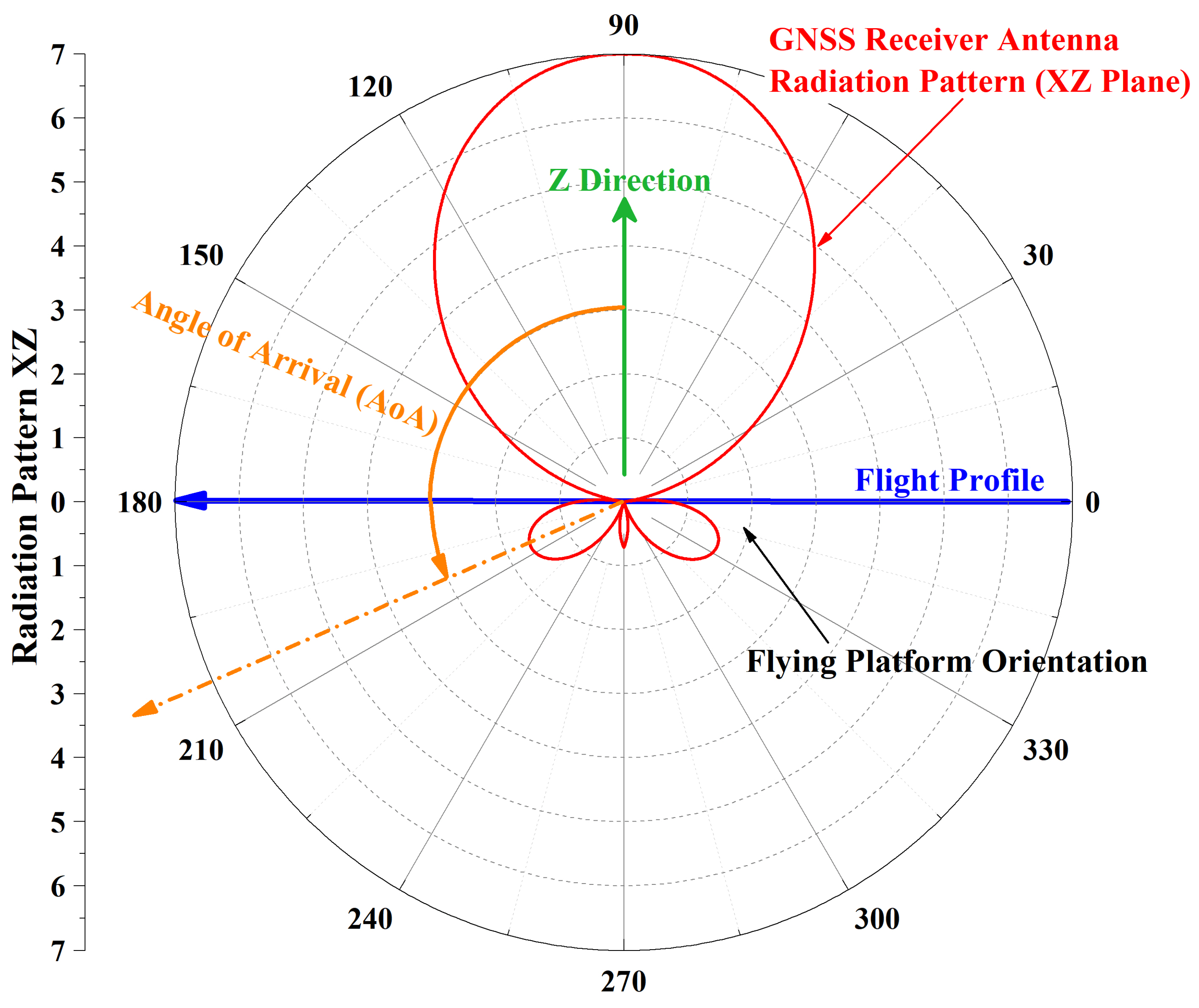

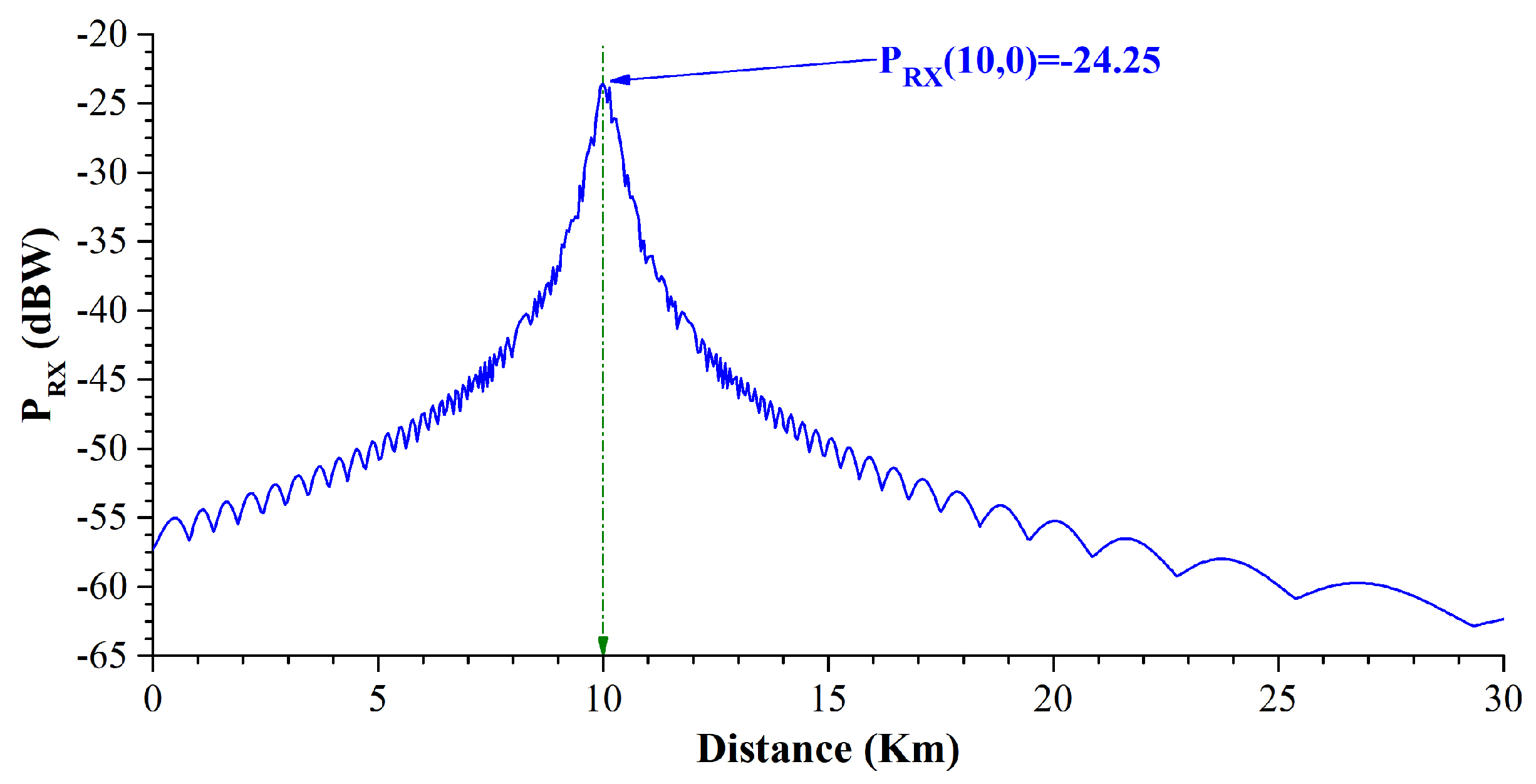
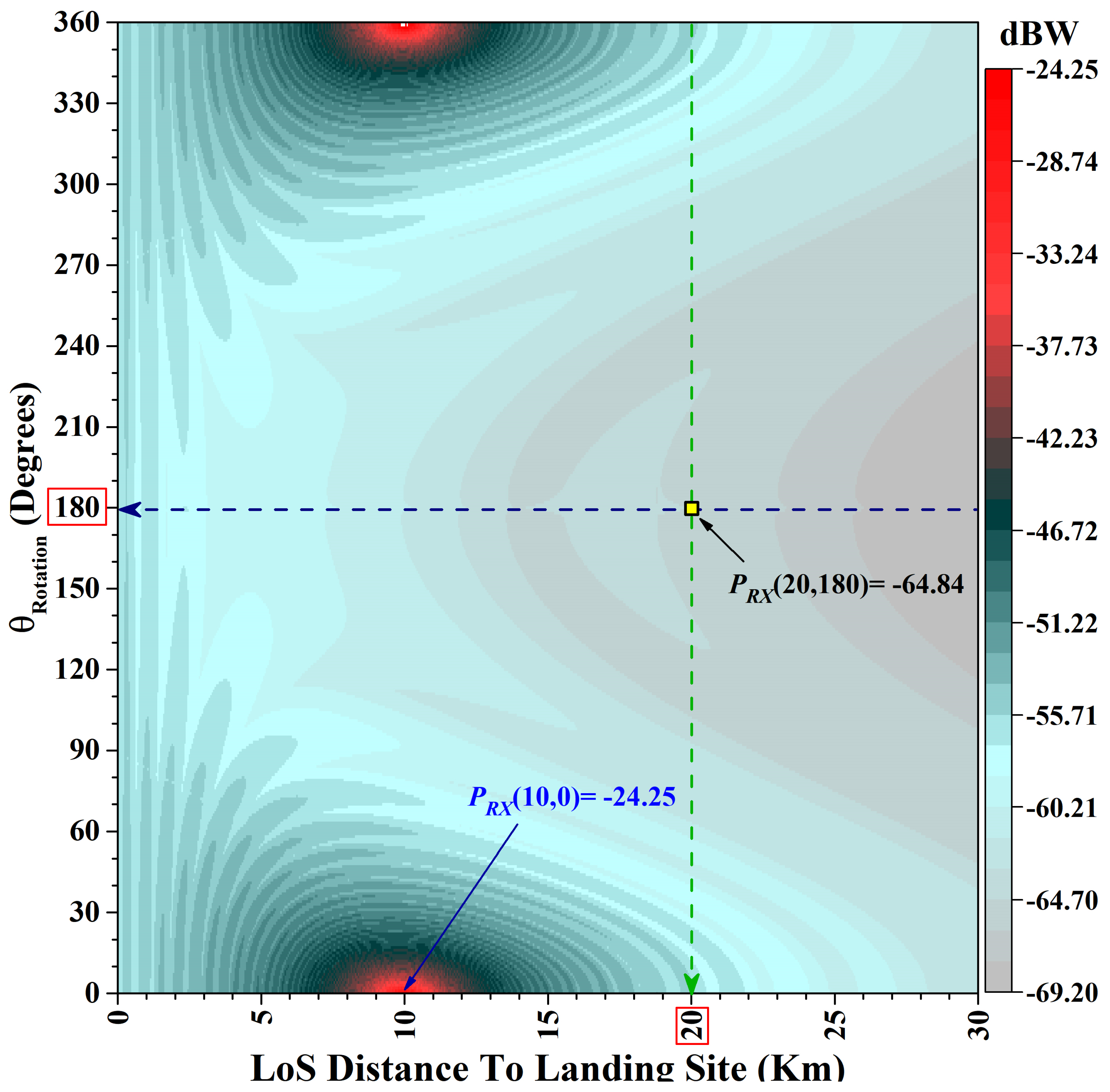
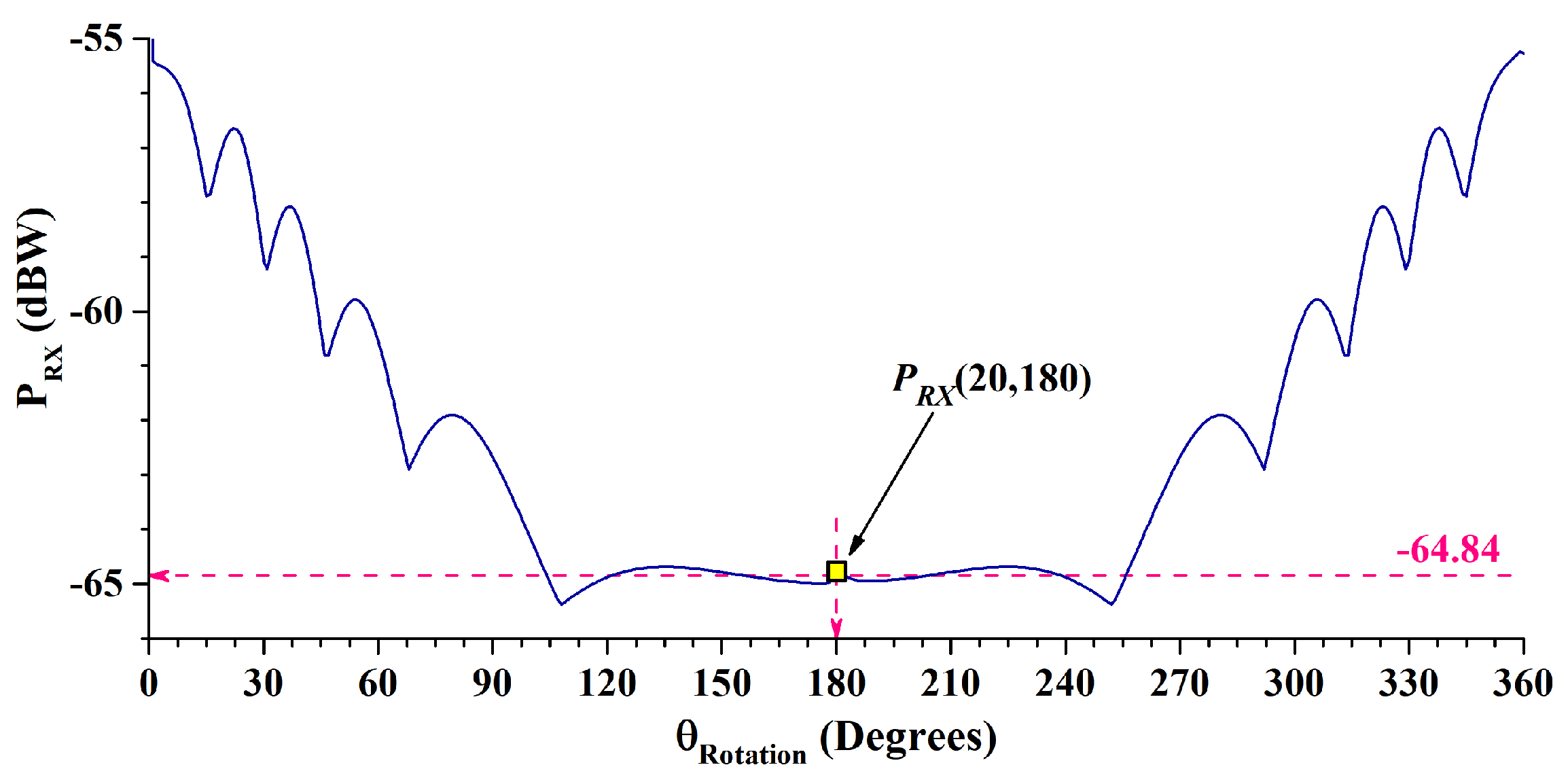
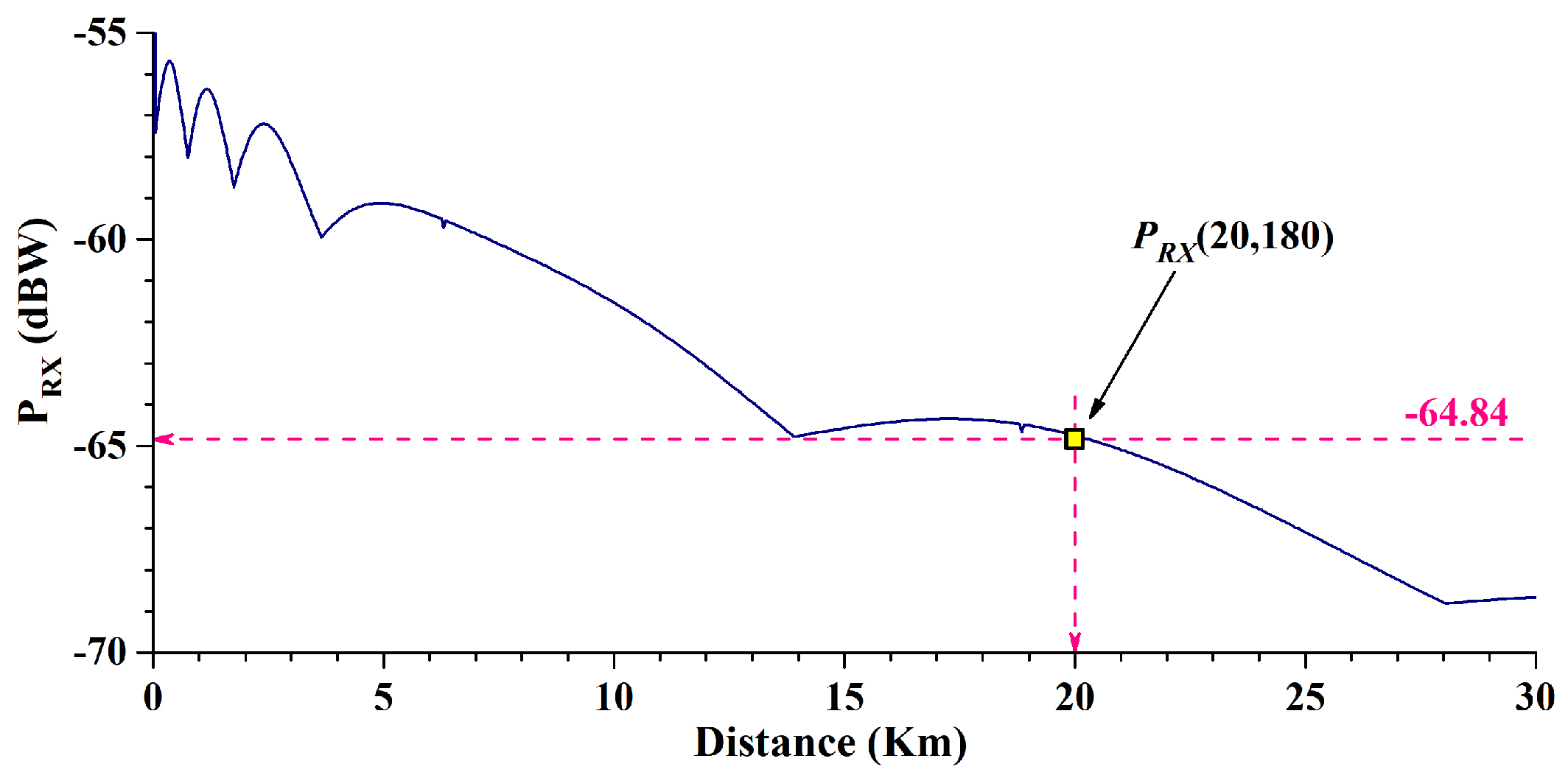
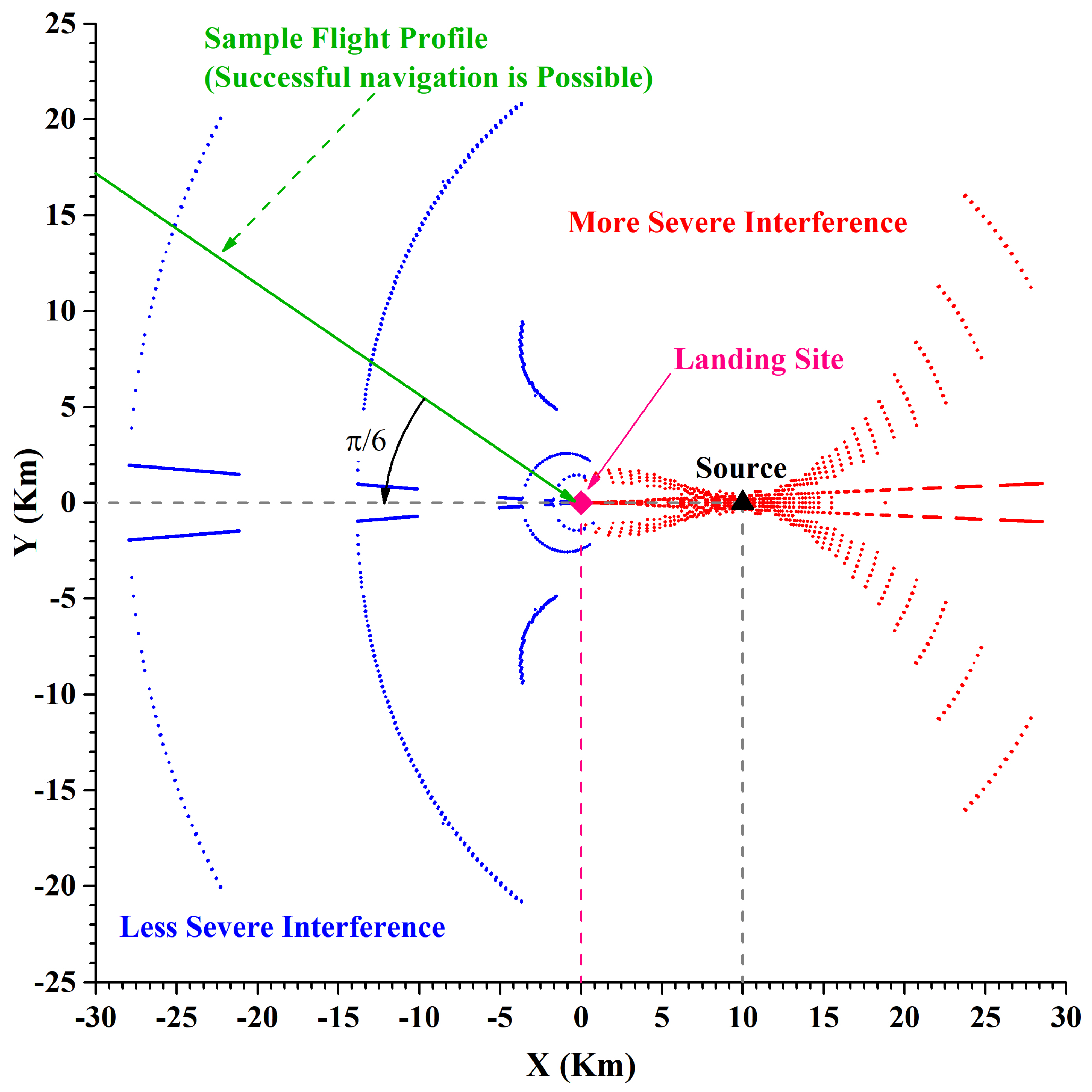
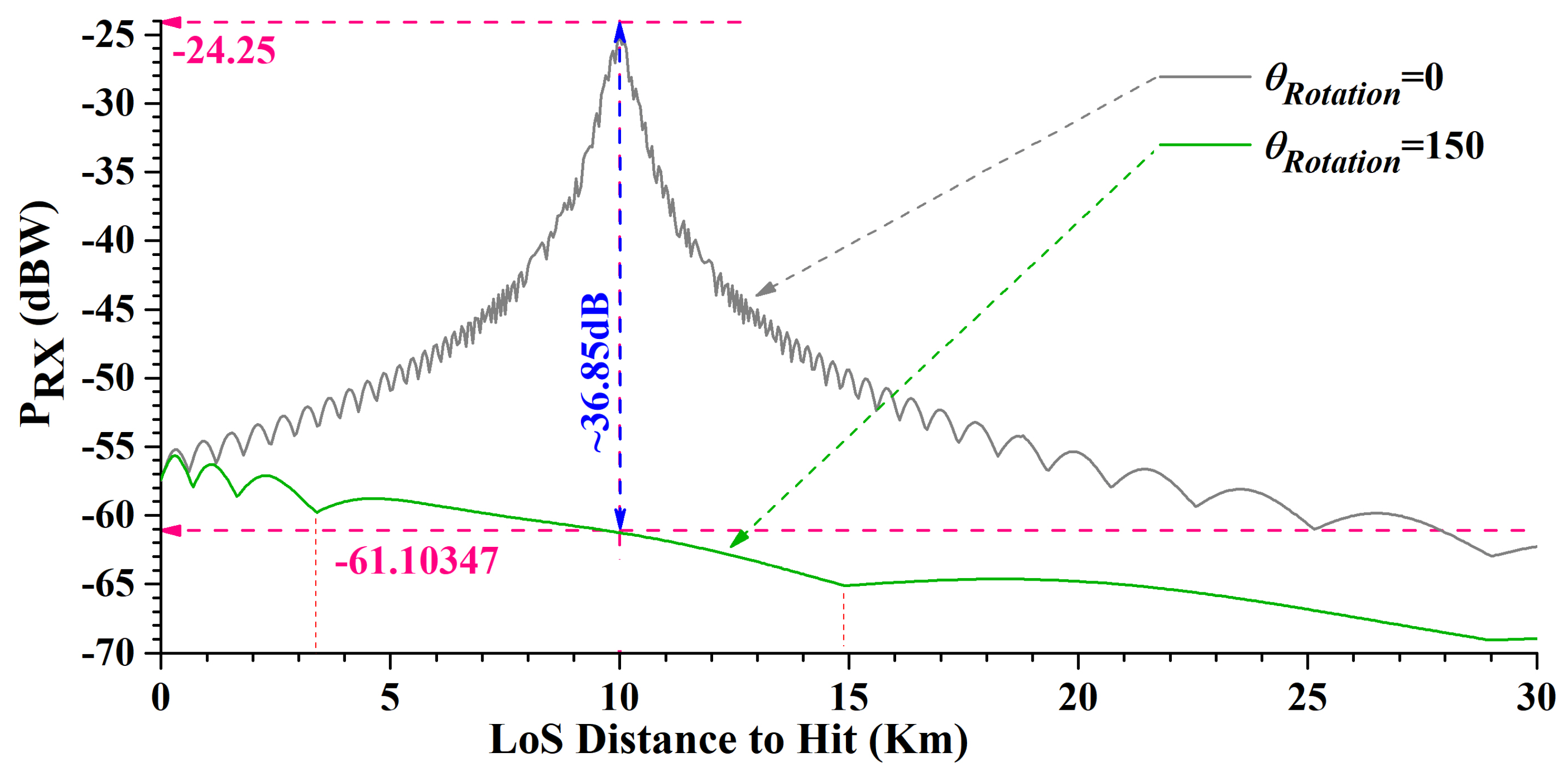
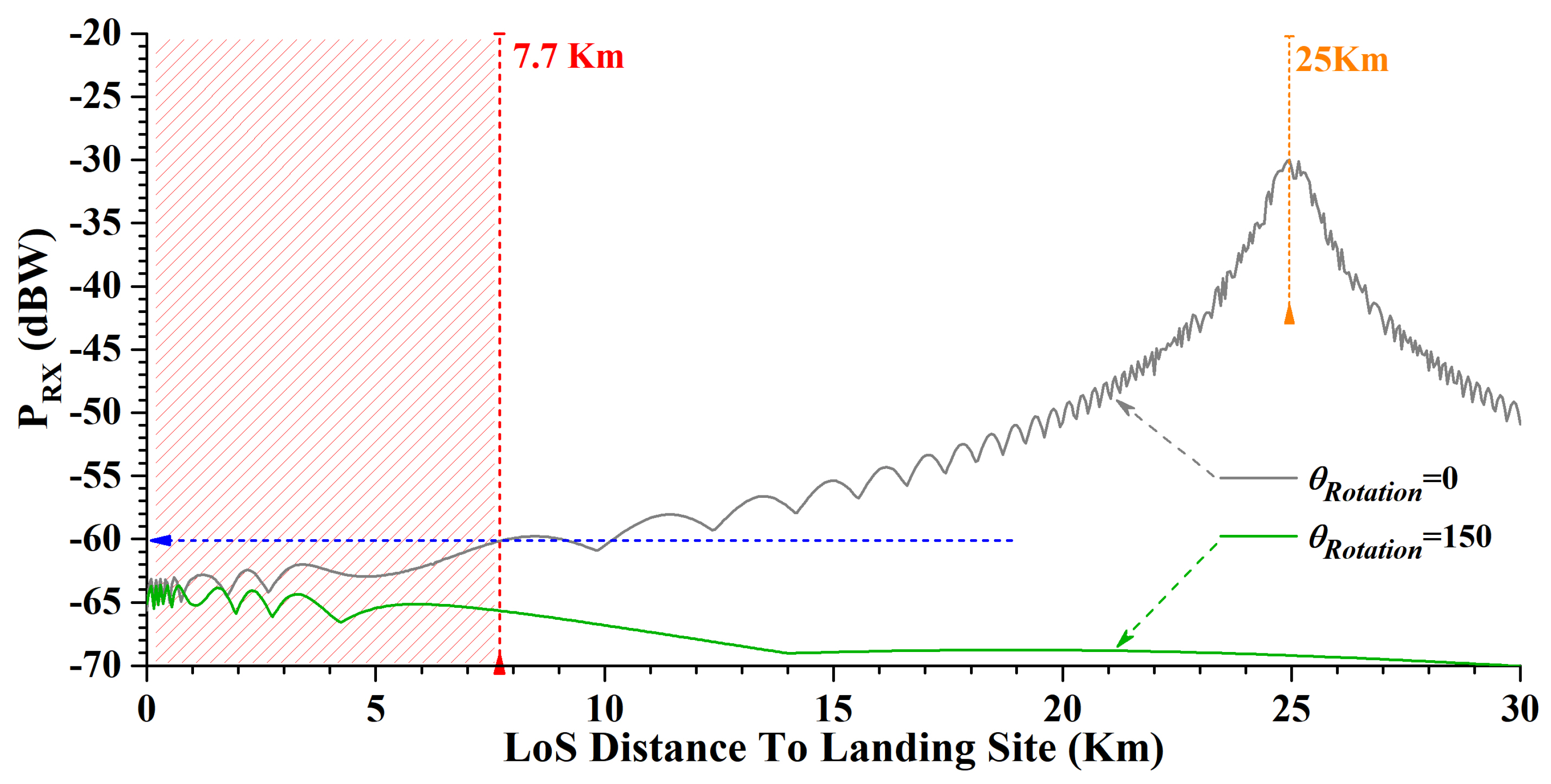
| Scenario | CDF | CPP | CMA | CCA | |
|---|---|---|---|---|---|
| XZ Plane | Landing | 1.06 | 5.25 | 50 | 50 |
| Main Lobe First Zero | Main Lobe Size | Back Lobe Size | Scale Translation | Scale Position |
|---|---|---|---|---|
| CXZ,MLFZ CXY,MLFZ | CXZ,MLS CXY,MLS | CXZ,BLS CXY,BLS | CXZ,ST CXY,ST | CXZ,SP CXY,SP |
| 0.708461 | 28.8462 | 67.3808 | 0.028845 | 2.65721 |
Disclaimer/Publisher’s Note: The statements, opinions and data contained in all publications are solely those of the individual author(s) and contributor(s) and not of MDPI and/or the editor(s). MDPI and/or the editor(s) disclaim responsibility for any injury to people or property resulting from any ideas, methods, instructions or products referred to in the content. |
© 2025 by the authors. Licensee MDPI, Basel, Switzerland. This article is an open access article distributed under the terms and conditions of the Creative Commons Attribution (CC BY) license (https://creativecommons.org/licenses/by/4.0/).
Share and Cite
Esmaeilkhah, A.; Landry, R.J. Estimation of the Effect of Single Source of RF Interference on an Airborne Global Navigation Satellite System Receiver: A Theoretical Study and Parametric Simulation. Eng. Proc. 2025, 88, 53. https://doi.org/10.3390/engproc2025088053
Esmaeilkhah A, Landry RJ. Estimation of the Effect of Single Source of RF Interference on an Airborne Global Navigation Satellite System Receiver: A Theoretical Study and Parametric Simulation. Engineering Proceedings. 2025; 88(1):53. https://doi.org/10.3390/engproc2025088053
Chicago/Turabian StyleEsmaeilkhah, Ahmad, and Rene Jr Landry. 2025. "Estimation of the Effect of Single Source of RF Interference on an Airborne Global Navigation Satellite System Receiver: A Theoretical Study and Parametric Simulation" Engineering Proceedings 88, no. 1: 53. https://doi.org/10.3390/engproc2025088053
APA StyleEsmaeilkhah, A., & Landry, R. J. (2025). Estimation of the Effect of Single Source of RF Interference on an Airborne Global Navigation Satellite System Receiver: A Theoretical Study and Parametric Simulation. Engineering Proceedings, 88(1), 53. https://doi.org/10.3390/engproc2025088053







